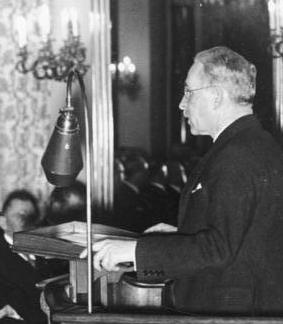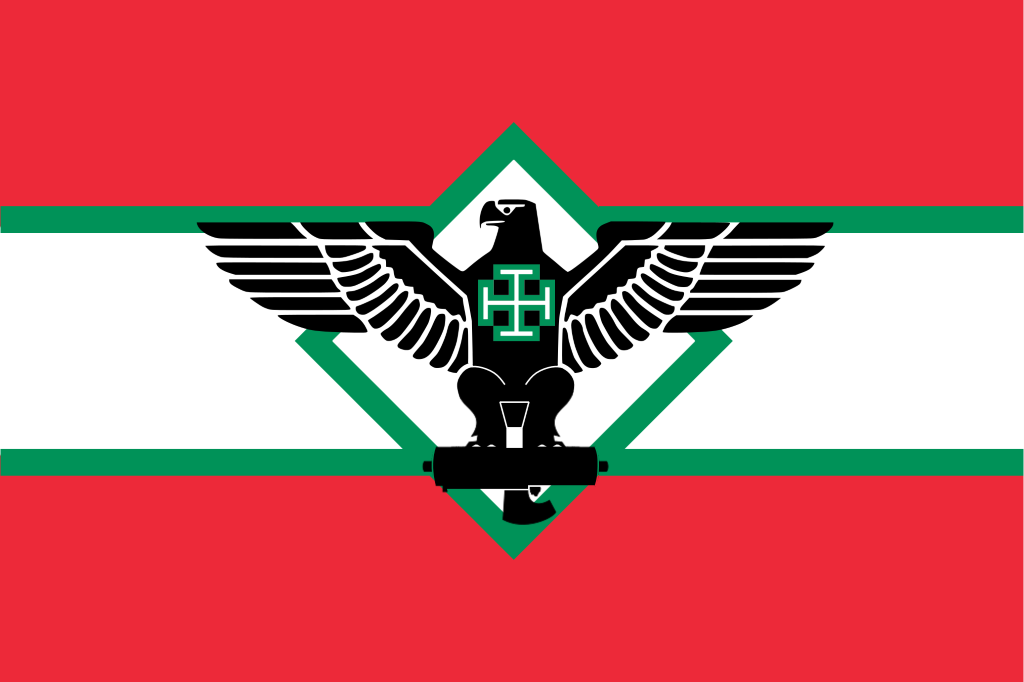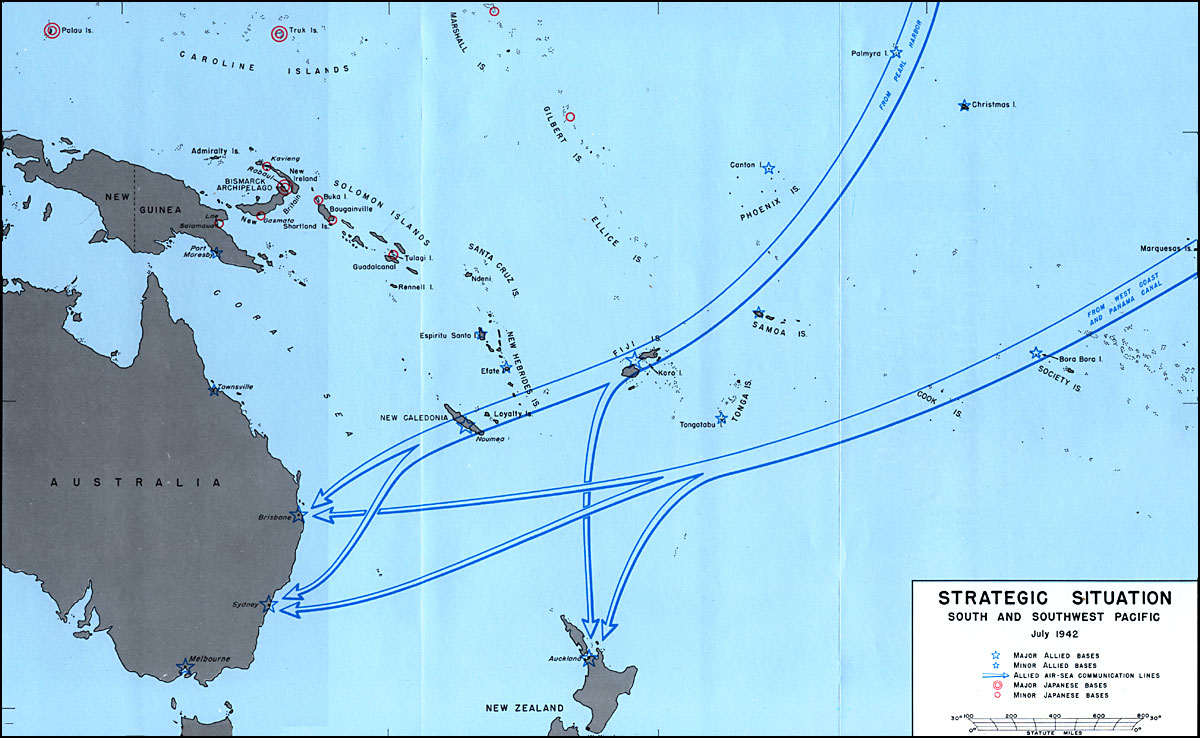Chapter 256: Coprospism: Yankokurian Yanism:
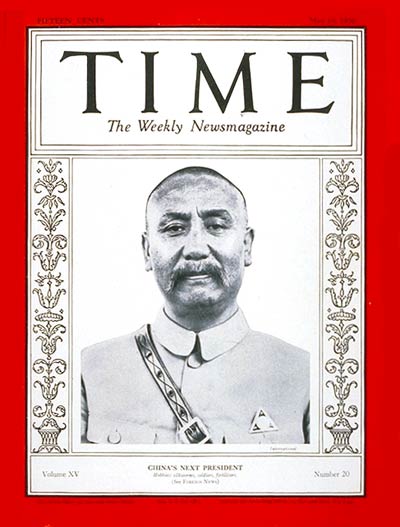
The Coprospism inside of the Empire of Yankoku was a Authoritarian/ Totalitarian and National form of Coprospism, invented, influenced and shaped by General, Father and Emperor Yan Xishan. Originally a Chinese General and later a warlord who served in the government of the Republic of China and gained control of the Shanxi Province in 1911. Because Shanxi was one of the poorest provinces, Yan focused on modernizing it's economy and infrastructure right from the start. Fearing that other warlords might overrun him after a military defeat inflicted on him in 1919, Yan invented a plan, so that Shanxi would be able to compete with other warlords. Because he wasn't ready to deal with these enemies yet, General Yan enforced a neutrality policy on Shanxi, freeing his province from the civil wars. Instead he devoted himself in modernizing Shanxi and develop it's resources. His success and reforms were so sufficient, that even outsiders dubbed him the "Model Governor", with Shanxi the "Model Province". The Times Magazine even called him the "Peace Lord of Shansi" and "China's Next President". Yan's determination to modernize Shanxi was mostly inspired from his experiences in Japan, but also by his experiences with foreign doctors and personnel who arrived in Shanxi in 1918 in order to help him suppress an epidemic that was ravaging the province. He was impressed with the zeal, talents and modern outlook of these personnel, and subsequently compared foreigners favorably to his own conservative and generally apathetic officials. Conversations with other famous reformers, including John Dewey, Hu Shih and Yan's close friend Dr. Hsiang-hsi Kung, reinforced his determination to modernize and westernize Shanxi. Yan even created the so called "Ten-Year Plan", that would even inspire the Kuomintang Government under Chiang to announce their "five-year plan" in 1935.

Yan's good relations and opinion of Japan, as well as his wish to remain neutral inside of China helped him to sign the He-Umezu Agreement that demilitarized the Chinese provinces of Hebei, Shanxi, Pingyuan and Shandong as well as the Mengjiang State in the Region of Suiyuan. Local anti-Japanese riots and embargo's soon threatened to disrupt this peace and would have lead to a conflict in northern China, so a new, pro-Japanese Government (Provisional Government of Beijing/ Yankoku) was established in Peiping (Beijing) with General Yan as it's leader since he had quickly had agreed to Japanese protection forces and support by the newly formed Co-Prosperity Sphere. Yan quickly sized control of the whole area under the disguise to secure the peace against bandits and communists. He then formed the State of Yankoku (also Yankukuo or Yanjiang) out of the Provisional Government of Beijing, where he dominated in influence and military power since then. Yan hoped to create a strong reginal hegemony with his new power base with the help of the Japanese, while he replaced incompetent or currup government members inside his state. Besides Japan and the newly formed states of Chosen, Manchukuo, or Mengjiang he became the next member state of the Co-Prosperity Sphere and chose to call it Yan after the ancient Chinese state and ethnic group that once lived in the area and also after his own name as the new founder and leader of this country. In his new residence, in the former Imperial Chinese Palace in Beijing (Peking), General Yan Xishan wrote the book "For my Yankokurians", a work about roots and tradition, culture and modernization, in short the vision he embodied for the future of the young nation state. In this book General and Leader Yan would not only speak of roots (wrongly so as he simply declared that the Han Chinese Majority in his state were still all Yan Chinese, their own ethnic and therefore loyal only to their own finally once again independent nation state), but also of things yet to come. This book would also be the first time that the General titled himself Father Yan in the meaning that he was the new father of their nation and people. Inside of Yanism, the title and nickname Father Yan would stick to him in history, even more so then General or Emperor, his official titles. This came from the Yanist ideal and believe of Yan and his people, that every state had to be a nation state to exist properly. In their mind this ethnic states and nations themselves were considered to be one big family or ethnic group itself. Each ethnic then further decided itself into the clan that made up this ethnic group and the families that made up this clans. Each family however was made up by it's individual members, so the whole ethnic of the Yankoku state felt like a big family from it's smallest individual citizen, up to the nation as a whole.
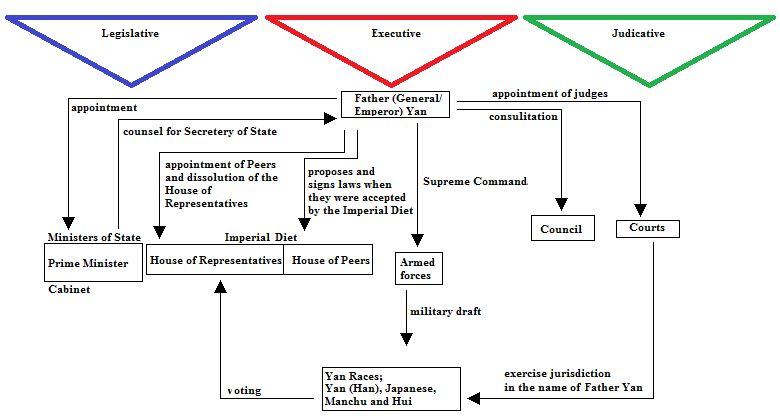
His own adaption of Coprospism was very authoritarian, sometimes even outright tyrannical, as he shaped the new state after his own will. He created a personal cult around himself and his family, that had partly even religious aspects, like the Coprospism in Japan, Chosen and Manchuria where the Emperors were Gods. Thinking about the future of his people and nation Yan at first established a strong dynastic and familiar tradition and cult around himself and his family, so his son would once be able to rule after him. In his book "Visions from our Yan Past", Yan declared why the ruler of their new state would once again be titled Emperor and that all ethnic minorities, the newly incoming Japanese colonists, the Mohammedan Hui and the Manchu people. The Manchu were later secretly exchange with the Empire of Manchukuo for Han Chinese and Resources. After some border adjustments in the north that set the Great Chinese Wall as it's norther border towards Manchukuo and Mengjiang, Yankoku made border agreements with Wang Jingwei's Nationalist China in the west and south that had a very similar ideology, but had recently claimed the Yankoku State as their own territory until the new border deal and their acceptance of each others membership inside the Co-Prosperity Sphere together. Father Yan would continue to lead Yankoku until his dead in the 1960's and his "Diaries of General Yan" became one of his most known books. His testament, memories, last ideas and thoughts were combined in the book "The Last Will of Father Yan" and would shape the nation even when his son and grandson ruled Yankoku.
